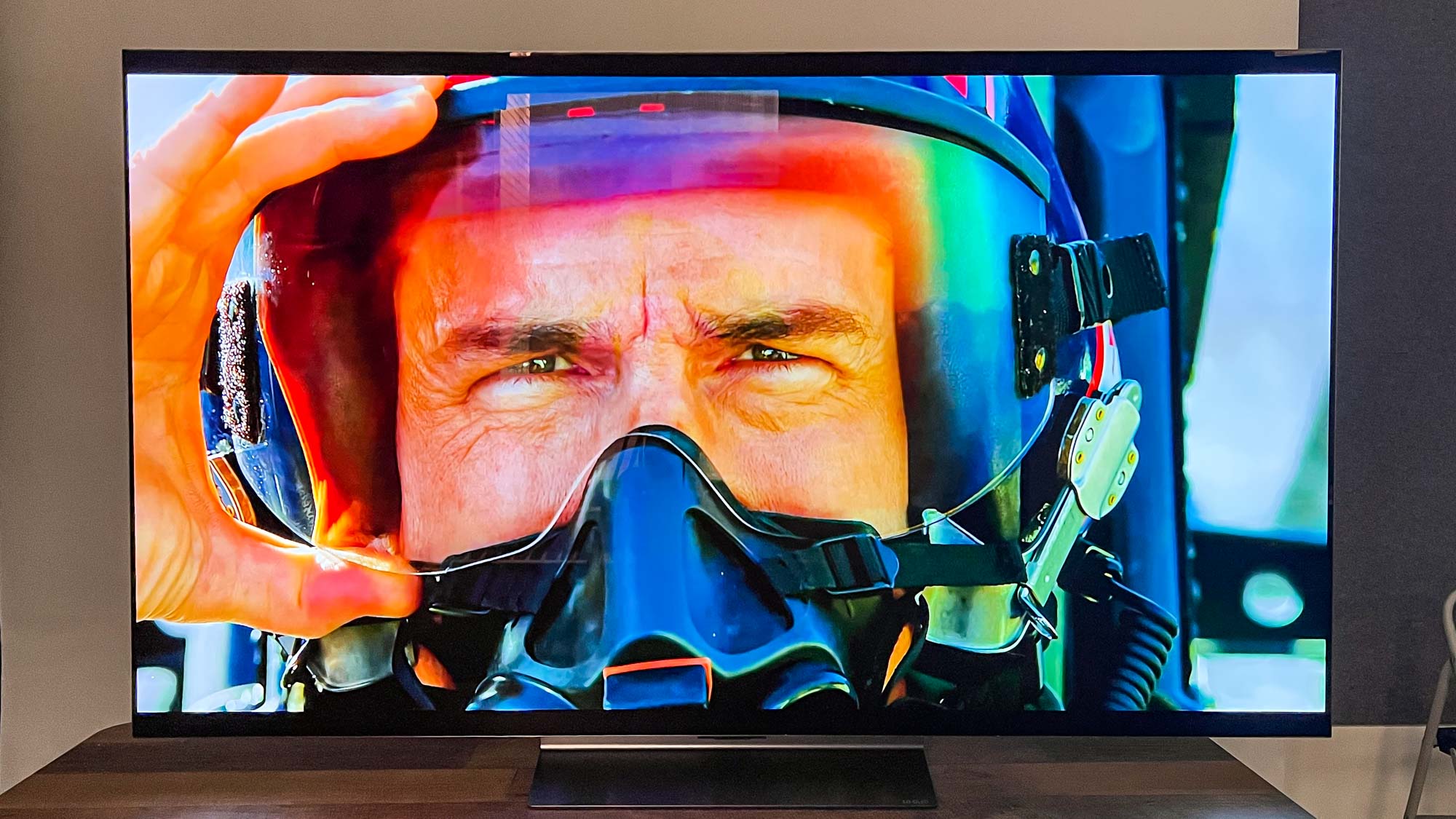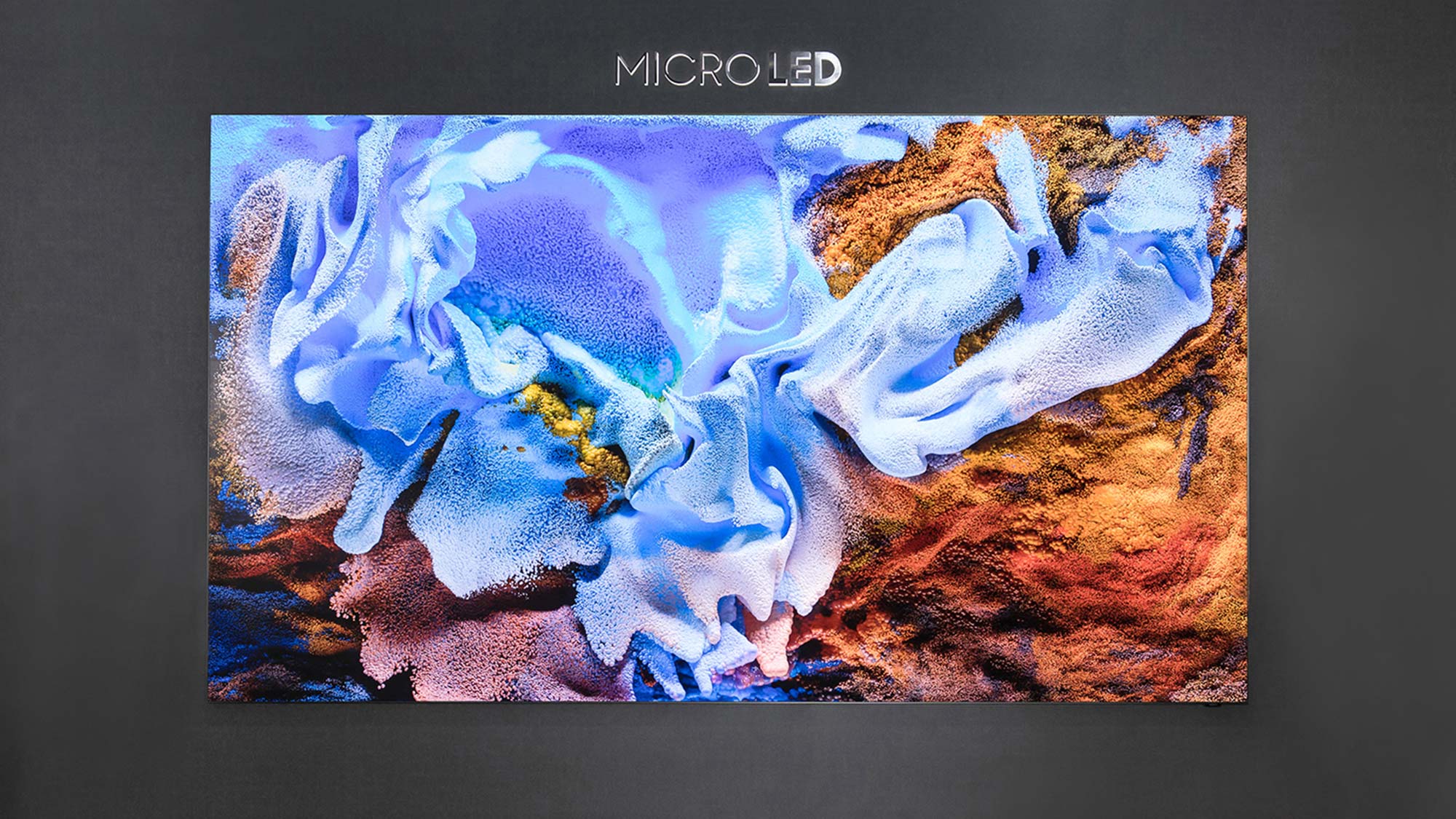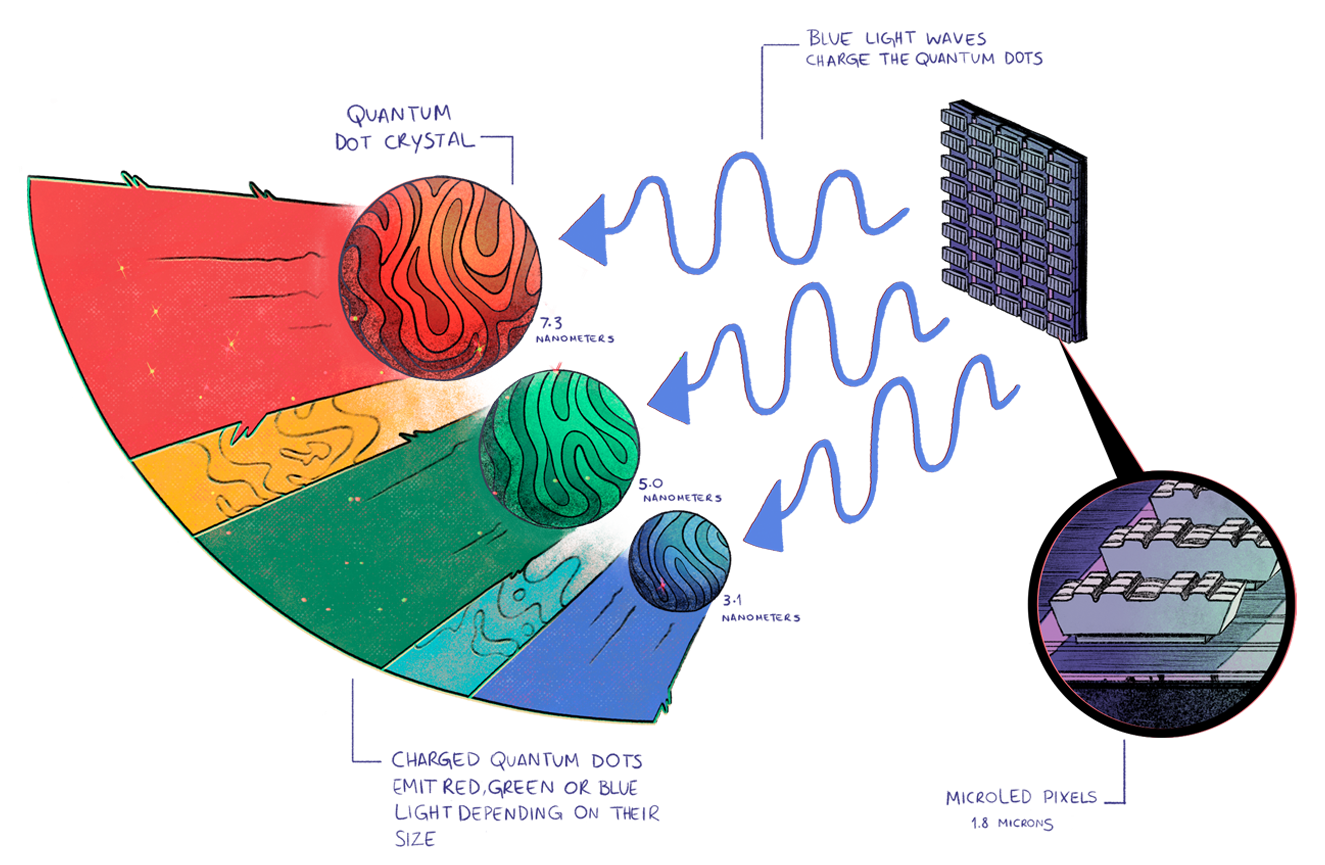What's after OLED? Here's how TVs could evolve in the next 5 years
Both OLED TVs and QLED TVs have massive upgrades in the pipeline

The best TVs are always changing because the display technologies behind them are constantly improving. 4K TVs used to be cutting-edge technology and now almost every TV has 4K resolution and 8K TVs are considered the next big thing. And traditional LCD displays have been replaced by OLED TVs and QLED TVs — a vast improvement.
But what’s coming next? At the moment, there are four relatively novel display technologies, each at different stages in their development.
On one side, OLED TVs are getting boosts from improved PHOLED technology and one day plasmonic PHOLED could take OLED displays to a whole other level. On the other, QLED TVs are also improving , with microLED displays already providing insane levels of peak brightness and NanoLED TVs currently in development to take quantum dot technology into new territory.
Let’s take a look at how each of these TV display technologies could evolve over the next five years.
PHOLED: Blue PHOLED materials coming in 2024
PHOLED displays are displays that use phosphorescent organic light-emitting diodes instead of fluorescent organic light-emitting diodes. And they are already here to a certain degree. If you have an OLED TV, it’s using PHOLED technology right now.
Currently, all OLED displays use red and green PHOLED subpixel materials. But what isn’t here — yet — are TV displays using blue PHOLED subpixel material.
Currently, all OLED displays use red and green PHOLED subpixel materials. But what isn’t here — yet — are TV displays using blue PHOLED subpixel material. Blue subpixels are still made of fluorescent materials. Phosphorescent OLED subpixels convert 100% of the electric current passed through it into light. By comparison, fluorescent OLED subpixels only manage a 25% conversion rate. That not only hurts power efficiency but impacts peak brightness as well.

This is expected to change starting in 2024. Universal Display (UDC), the company that invented PHOLED technology, is making blue PHOLED subpixel materials available to display manufacturers starting next year for use in their OLED TVs.
Get instant access to breaking news, the hottest reviews, great deals and helpful tips.
We may not actually see these PHOLED TVs come out until 2025, but definitely keep an eye out for them. PHOLED is a subtle change over current OLED technology but it’s a major improvement.
Plasmonic PHOLED: The future of OLED TVs
While PHOLED is what’s coming next for OLED TVs, plasmonic PHOLED is the future. This technology is also in development by UDC, and when I spoke with Vice President Dr. Michael Hack, he said that plasmonic PHOLED “could perhaps double the OLED efficiency over the years.” If that ends up being true, plasmonic PHOLED will almost certainly revolutionize OLED TVs.
"UDC is working on this novel device called a plasmonic PHOLED, which is an exciting R&D area that could perhaps double the OLED efficiency over the years."
Dr. Michael Hack, UDC
But you’re probably wondering what plasmonic PHOLED actually is. Dr. Hack described it in our conversation as something that “fundamentally changed the OLED device design” and uses “new physics that actually control what causes an OLED to degrade.”
I did some additional research after our interview and what I gathered is that the benefits of plasmonic PHOLED come from improvements in how light is emitted through the gap within the OLED subpixel stack. It’s incredibly technical and not fully refined yet — Dr. Hack referred to it as “R&D” — but in essence, Dr. Hack summed it up when he stated that the changes UDC has made in the physics of the OLED itself are what causes the boost in efficiency provided by plasmonic PHOLED technology.
Currently, there is no ETA for when plasmonic PHOLED displays will finally hit shelves, but I got the impression from Dr. Hack that ideally UDC would have it developed for use within the next 10 years. In the meantime, blue PHOLED subpixel materials should still give OLED TVs enough of a boost to keep them in contention for the best TVs every year.
MicroLED: Shining bright but insanely expensive

MicroLED TVs are already out in the wild, but they’re still very much a part of the future of TV display technology. And that’s in no small part because they’re insanely expensive. The average MicroLED TV is more than $100,000 — though prices are finally starting to drop below that figure.
The reason MicroLED TVs are so expensive? Well, for starters, they are very difficult to manufacture. The way MicroLED displays are designed is by taking tiny LEDs and building them into small LED substrates and taking those small substrates and assembling them into the final MicroLED display. The process requires robots and one mistake ruins the entire display.
Given there are around 25 million subpixels in a MicroLED TV, the yields are often prohibitively expensive. Currently, MicroLED display panels are manufactured in 10.1-inch to 14.6-inch panels, costing anywhere from $5,800 to $10,000, and the average MicroLED TV is over 100 inches in display size. So it costs tens of thousands of dollars to manufacture one.
The research firm Omdia is projecting those same 10.1-inch to 14.6-inch MicroLED panels to cost TV manufacturers just $1,277 to $2,400 by 2027.
There is good news on the horizon though. The research firm Omdia is projecting those same 10.1-inch to 14.6-inch MicroLED panels to cost TV manufacturers just $1,277 to $2,400 by 2027. Once that happens you many finally be able to afford a microLED TV, which is a huge win because currently, they are the brightest TVs on the market. They’re also much more power-efficient than current miniLED and QLED TVs, which is better for your electric bill.
NanoLED: Flexible, futuristic quantum dot TV displays
NanoLED TVs are the ultimate evolution of QLED TVs — for now. In fact, they’re so futuristic that, like with plasmonic PHOLED TVs, they don’t exist yet.
Currently, QLED and QD-OLED TVs use what is called a quantum dot filter. These filters excel at reproducing colors more accurately than traditional LED-LCD TVs and OLED TVs. In both display technologies, light is passed through a display layer of quantum dots that then reproduce the color based on the width of the dot.

What NanoLED does is eliminate the need for a backlight or OLED altogether and instead, the quantum dots are directly stimulated by electricity in a process called electro luminescence.
Nanosys, the company behind quantum dot technology and NanoLED says that NanoLED can achieve over 600,000 nits peak brightness, though I’m skeptical that NanoLED TV displays will ever match that figure.
This potential has two major benefits. The first is that NanoLED TVs could be even brighter than MicroLED TVs. Nanosys, the company behind quantum dot technology and NanoLED says that NanoLED can achieve over 600,000 nits peak brightness, though I’m skeptical that NanoLED TV displays will ever match that figure. Frankly, I don’t think they’ll need to either to be the brightest TVs on the market.
The other benefit is added flexibility. LED-LCD display panels are inherently rigid, and therefore every foldable display you see no is an OLED display. But NanoLED is designed around a solution-based process similar to inkjet TV displays. This allows the TV display to be naturally flexible, and Nanosys says it could also reduce production costs.
The earliest projection for NanoLED TVs is 2025, but most likely it will take longer than that for NanoLED TVs to become one of the best TVs you can buy. But like PHOLED, plasmonic PHOLED and microLED TVs, its a display technology that you’ll want to keep your eye on.
More from Tom's Guide
- This is the one thing to know before you buy a TV
- TCL’s brand-new 50-inch 4K TV is here — and it’s ridiculously cheap
- Google TV just got a major upgrade for gamers — and it’s coming to Chromecast

Malcolm has been with Tom's Guide since 2022, and has been covering the latest in streaming shows and movies since 2023. He's not one to shy away from a hot take, including that "John Wick" is one of the four greatest films ever made.
